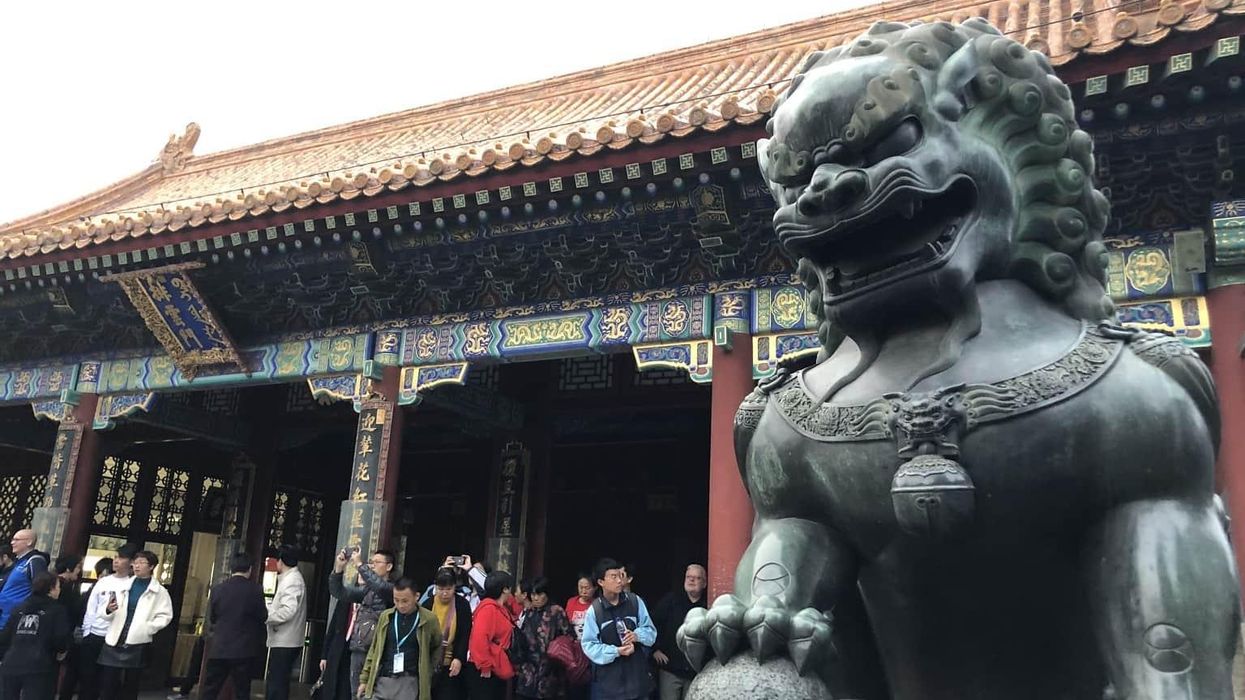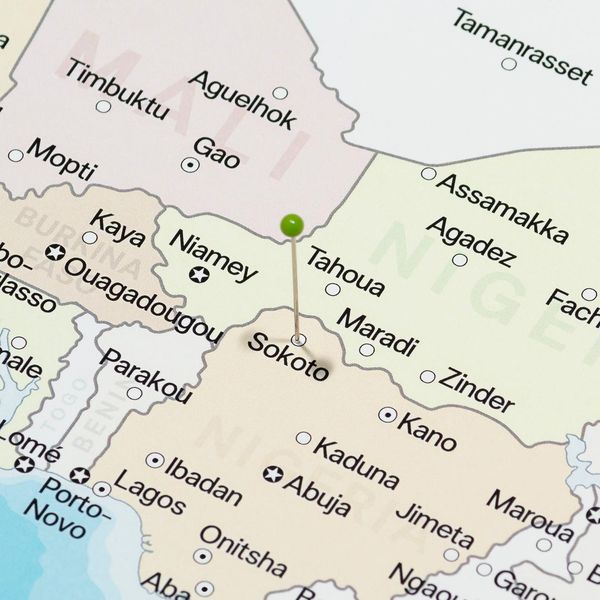The past year has seen events that historians will likely conclude were pivotal in the trajectory of our world’s politics. From the ongoing wars in the Middle East and Ukraine to the domestic politics that shape U.S. foreign policy, Quincy Institute staff and associates describe briefly below a handful of books published in 2024 that can help guide your understanding of these events, put them into historical context, and explain their significance.
***
Daniel Bessner, Associate Professor in American Foreign Policy, University of Washington and non-resident fellow at the Quincy Institute: “Did It Happen Here? Perspectives on Fascism and America,” edited by Daniel Steinmetz-Jenkins.
Since 2015, historians and pundits alike have debated whether or not Donald J. Trump and his administration were fascist. This edited collection compiles a number of essays on the topic, ultimately concluding that the "fascist debate" around Trump should probably be laid to rest. Anyone looking to understand this oftentimes vexing and frustrating debate should check this book out (and the fact that I had a piece in it doesn't hurt, either).
***
Connor Echols, Managing Editor, Nonzero Foundation. “The Damascus Events,” by Eugene Rogan.
The story began with a rumor. As a brutal sectarian war played out in Lebanon in 1860, lurid reports spread that Christians had massacred Muslims at Friday prayers in Jerusalem. Much of the Muslim community of Damascus became convinced that their Christian neighbors — who made up roughly 15% of the city’s population — were preparing to repeat the alleged deed. The ensuing violence left 5,000 Syrian Christians dead.
In “The Damascus Events,” historian Eugene Rogan offers a riveting account of this turning point in Syrian history. Rogan highlights how technological advances, political modernization and growing foreign influence disrupted the delicate sectarian balance in Syria and led to an outbreak of intercommunal violence not seen again until the 2011 civil war. The book tells the story through the diplomatic dispatches of Mikhail Mishaqa, a Syrian Christian polymath who served as the vice-consul of the United States in Damascus.
Rogan’s story is as much about the massacres as it is about the slow, difficult process of putting society together again after heart-rending violence. This month’s ousting of the Bashar al-Assad regime in Syria — led by Islamist rebels with questionable commitments to religious pluralism — makes this book essential reading. “History does not provide a roadmap for solving contemporary problems, but it does demonstrate what’s possible,” Rogan writes.
***
Alex Jordan, deputy communications director at the Quincy Institute: “Toward the Abyss,” by Volodymyr Ishchenko.
“Toward the Abyss” is critical reading for anyone hoping to gain a better understanding of the structural realities, class interests and malefactors which conspired to make Ukraine’s post-Soviet story one marked by deprivation, competing dominations, and ultimately, war.
Ishchenko, a left-social scientist, offers a series of essays on critical points in the last decade of Ukrainian geopolitics from the 2014 Maidan revolution to Russia’s 2022 full-scale invasion. The book’s holistic approach proves a successful strategy for unpacking the dizzyingly complex web that is Ukraine’s political economy — from questions of identity to regional divides to the power struggle between political and transnational capitalists — and its contemporary history, which remains highly-contested terrain.
Ishchenko’s book will be refreshing for any reader who is accustomed to over-simplified narratives about the crises facing Ukrainians. But his work is not made valuable by being a distinct “voice” from Ukraine — Ishchenko heartily rejects the standpoint epistemology framework which allows elites abroad to instrumentalize discrete perspectives on the ground for their own ends; this book is a must-read because it offers a thoughtful and fearless exploration of the “protests, revolutions, far rights and radical lefts, civil societies, nationalisms and imperialisms” which have brought Ukrainians to a bitter present.
***
Blaise Malley, journalist: “Homeland: The War on Terror in American Life,” by Richard Beck.
“Homeland” is a sweeping exploration of how 9/11 reshaped the United States — not just its foreign policy, but its society, politics, and culture — with lasting consequences still felt today. Beck traces the long shadows cast by the attacks, examining how the U.S. response has defined the country's trajectory over the past two decades. In the book's final section, Beck addresses the culture of impunity that surrounded the disastrous wars in Iraq and Afghanistan. The decision-makers behind these failures were never held accountable. Many still hold positions of power today. As Beck explains, the militarism that drove U.S. foreign policy in the early 2000s continues today in American policy in Gaza, Ukraine, and China — even as American hegemony comes to an end. “For fifteen years, the war on terror defined the terms in which American politicians allowed themselves to think,” Beck concludes. “Their apparent inability to start thinking in different teams now that the war has ended bodes poorly for the rest of the 21st century.”
***
Chris Preble, Senior Fellow and Director, Reimagining US Grand Strategy Program, Stimson Center: “Dying by the Sword: The Militarization of US Foreign Policy,” by Monica Duffy Toft and Sidita Kushi.
In addition to combating the absurd militarization of U.S. foreign policy, writ large, something that the Quincy Institute’s founders understood very well, Monica and Sidita help us understand some of the ongoing crises and conflicts around the world, including in Syria, Afghanistan, and Sudan. Drawing on evidence from their proprietary Military Intervention Project, the authors show just how reliant the United States has become on the use of force — and also reveal how badly this has worked out for Americans and the people in the countries subjected to U.S. intervention.
***
Karthik Sankaran, senior research fellow at the Quincy Institute for Responsible Statecraft: “A World Safe for Commerce,” by Dale C. Copeland.
Copeland’s “A World Safe For Commerce” is stimulating, ambitious, and timely. It sets out a theory of the behavior of states in the international system and tests it against the author’s reading of 250 years of U.S. foreign policy. His construct is that a state’s behavior is driven by its “need to expand its economic power sphere as a foundation for future geopolitical power” and “to protect it against all comers.”
An important insight is that international trade provides not just goods and raw materials, but also sheer market size that delivers economies of scale. As rivals have similar motivations, he notes that the most dangerous moments are when a state fears its trade opportunities in the future will shrink. He then applies this schema to conflicts from the American Revolution to the present day, seeking to capture in detail the motivations of decision-makers at moments like the start of the Mexican- and Spanish-American Wars. He sees both motivated by an American drive first towards, and then, deeper into the Pacific to secure the Asia trade.
To a puttering ex-historian, the quest for a theory that explains everything on the basis of a unitary conception of the state might seem a bridge too far, especially if it pushes domestic interest groups into irrelevance. Still, the book makes short work of shibboleths like “Democratic Peace Theory” citing the examples of the Spanish-American War and persistent Anglo-American rivalry. Even where one disagrees with the author, he provides useful tools to think. And he uses them in a counsel of relative restraint, urging at the end of the book that Washington assure “CCP leaders that the U.S. is not seeking to destroy China’s economy.”
***
Kelley Vlahos, editorial director of Responsible Statecraft: "Provoked: How Washington Started the New Cold War with Russia and the Catastrophe in Ukraine" by Scott Horton.
If you are looking for a simple way to explain how and why Russia invaded Ukraine in February 2022 and Washington's relentless support of Kyiv's defenses "to the last Ukrainian" and to the tune of $175 billion U.S. tax dollars, this tour de force by Horton is not it. Horton himself is a relentless researcher whose persistence for the truth and skepticism of U.S. foreign policy makes him one of the rare journalists of our age. As a result, his books are not breezy, digestible overviews of our wars, but doorstoppers packed with valuable, largely unearthed information and data that lead right to the door of real time. "Provoked" is no exception: a 700-page historical record of U.S. policy on Russia, beginning with the H.W. Bush administration, with tons of rarely explored names and deeds through the Color Revolutions, and three more American presidents, right up to today. This is no small feat. This book is and should be assigned to any student, of scholarship or otherwise, who wants to understand the mechanics of provocation and how the United States is, hands down, the best at it.
***
Adam Weinstein, deputy director of the Middle East program at the Quincy Institute: “Illusions of Control: Dilemmas in Managing U.S. Proxy Forces in Afghanistan, Iraq, and Syria,” Dr. Erica Gaston.
“Illusions of Control” examines how the United States engages with its partners — or, in some cases, proxies — in the Middle East and the factors that influence Washington’s ability to control or even monitor them.
Since the launch of the U.S. “War on Terror,” the United States has supported various militias and rebel groups across the Middle East and Central Asia. These proxy partnerships have allowed the U.S. to limit its own troop deployments while leveraging the local knowledge of indigenous armed groups. However, these relationships come with significant risks — diplomatic, human rights-related, reputational, and tactical. Through case studies in Afghanistan, Iraq, and Syria, Gaston explores how U.S. policymakers navigate these challenges. Her extensive field research, combined with the real-world relevance of the subject, makes the book both accessible and engaging for readers while maintaining academic rigor.
















